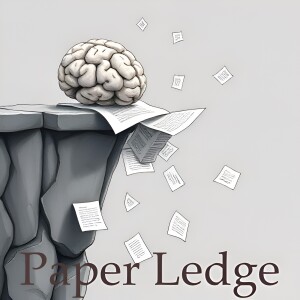
- Podcast Features
-
Monetization
-
Ads Marketplace
Join Ads Marketplace to earn through podcast sponsorships.
-
PodAds
Manage your ads with dynamic ad insertion capability.
-
Apple Podcasts Subscriptions Integration
Monetize with Apple Podcasts Subscriptions via Podbean.
-
Live Streaming
Earn rewards and recurring income from Fan Club membership.
-
Ads Marketplace
- Podbean App
-
Help and Support
-
Help Center
Get the answers and support you need.
-
Podbean Academy
Resources and guides to launch, grow, and monetize podcast.
-
Podbean Blog
Stay updated with the latest podcasting tips and trends.
-
What’s New
Check out our newest and recently released features!
-
Podcasting Smarter
Podcast interviews, best practices, and helpful tips.
-
Help Center
-
Popular Topics
-
How to Start a Podcast
The step-by-step guide to start your own podcast.
-
How to Start a Live Podcast
Create the best live podcast and engage your audience.
-
How to Monetize a Podcast
Tips on making the decision to monetize your podcast.
-
How to Promote Your Podcast
The best ways to get more eyes and ears on your podcast.
-
Podcast Advertising 101
Everything you need to know about podcast advertising.
-
Mobile Podcast Recording Guide
The ultimate guide to recording a podcast on your phone.
-
How to Use Group Recording
Steps to set up and use group recording in the Podbean app.
-
How to Start a Podcast
-
Podcasting
- Podcast Features
-
Monetization
-
Ads Marketplace
Join Ads Marketplace to earn through podcast sponsorships.
-
PodAds
Manage your ads with dynamic ad insertion capability.
-
Apple Podcasts Subscriptions Integration
Monetize with Apple Podcasts Subscriptions via Podbean.
-
Live Streaming
Earn rewards and recurring income from Fan Club membership.
-
Ads Marketplace
- Podbean App
- Advertisers
- Enterprise
- Pricing
-
Resources
-
Help and Support
-
Help Center
Get the answers and support you need.
-
Podbean Academy
Resources and guides to launch, grow, and monetize podcast.
-
Podbean Blog
Stay updated with the latest podcasting tips and trends.
-
What’s New
Check out our newest and recently released features!
-
Podcasting Smarter
Podcast interviews, best practices, and helpful tips.
-
Help Center
-
Popular Topics
-
How to Start a Podcast
The step-by-step guide to start your own podcast.
-
How to Start a Live Podcast
Create the best live podcast and engage your audience.
-
How to Monetize a Podcast
Tips on making the decision to monetize your podcast.
-
How to Promote Your Podcast
The best ways to get more eyes and ears on your podcast.
-
Podcast Advertising 101
Everything you need to know about podcast advertising.
-
Mobile Podcast Recording Guide
The ultimate guide to recording a podcast on your phone.
-
How to Use Group Recording
Steps to set up and use group recording in the Podbean app.
-
How to Start a Podcast
-
Help and Support
- Discover

Computer Vision - Adaptive Audio-Visual Speech Recognition via Matryoshka-Based Multimodal LLMs
Hey PaperLedge crew, Ernis here, ready to dive into some seriously cool research! Today, we're talking about a project that's all about making speech recognition way better, especially when things get noisy.
Think about it: you're trying to use voice commands on your phone at a crowded concert, or maybe you're on a video call with construction happening next door. The background noise can make it almost impossible for your device to understand you, right?
That's where Audio-Visual Speech Recognition, or AVSR, comes in. It's like teaching your device to read your lips at the same time as listening to what you're saying. Makes sense, yeah? Humans do it all the time!
Now, the researchers we're looking at today are tackling this problem using something called Large Language Models, or LLMs. You've probably heard of them – they're the brains behind a lot of AI stuff, including some voice assistants. The thing is, feeding LLMs audio and video data is like giving them a giant file to process. It takes a ton of computing power, and that gets expensive, both in terms of money and energy.
Think of it like this: imagine trying to stream a 4K movie on your phone with only one bar of service. It's gonna be slow, choppy, and probably drain your battery super fast. LLMs face a similar issue with large audio-visual files.
Previous attempts to solve this have involved compressing the data before feeding it to the LLM. It's like zipping a file before emailing it – makes it smaller and easier to handle. But, and here's the catch, compress it too much, and you lose important information. It's like compressing a photo so much that it becomes pixelated and blurry.
"Higher compression ratios often lead to performance degradation, necessitating a trade-off between computational efficiency and recognition accuracy."So, researchers have been stuck with a difficult choice: Do they use high-quality data and spend a fortune on processing, or compress the data and sacrifice accuracy?
That's where the paper we're discussing comes in. These researchers have come up with a clever solution called Llama-MTSK. It's a Matryoshka-based Multimodal LLM for AVSR, which sounds super technical, but the core idea is actually pretty cool.
Remember those Russian nesting dolls, the Matryoshka dolls? Llama-MTSK is based on the same principle! It encodes audio-visual data at different levels of detail within the same model. So, instead of training separate models for different compression levels, you have one model that can adapt based on the available computing power.
It's like having a Swiss Army knife for speech recognition! Need maximum accuracy? Use the full set of tools (high level of detail). Running on a low-power device? Use a smaller set of tools (lower level of detail).
And to make things even more efficient, they use something called "LoRA" (Low-Rank Adaptation) which allows them to fine-tune the LLM without having to retrain the entire thing from scratch. Think of it as adding a small, specialized module to an existing tool to make it even better at a specific task.
- Global LoRA: Adjusts the overall performance of the model.
- Scale-Specific LoRA: Fine-tunes the performance at different levels of detail (Matryoshka doll sizes!).
The results? Well, they’re impressive. Llama-MTSK achieved state-of-the-art results on the two biggest AVSR datasets, meaning it's as good as, or even better than, other models that were trained independently at fixed compression levels.
Why does this matter?
- For developers: This could lead to more efficient and accurate voice recognition systems on a wider range of devices, from smartphones to smart home assistants.
- For users: Better voice recognition in noisy environments, making voice commands and video calls more reliable.
- For the environment: Reduced computational costs mean less energy consumption, making AI more sustainable.
So, that's Llama-MTSK in a nutshell. Pretty neat, huh?
Here are a couple of things I'm wondering about:
- How might this technology be adapted for languages that have very subtle lip movements?
- Could this approach be used to improve other AI tasks, like image recognition or natural language processing?
Let me know what you think in the comments! Until next time, keep learning!
Credit to Paper authors: Umberto Cappellazzo, Minsu Kim, Stavros Petridis
More Episodes
Create your
podcast in
minutes
- Full-featured podcast site
- Unlimited storage and bandwidth
- Comprehensive podcast stats
- Distribute to Apple Podcasts, Spotify, and more
- Make money with your podcast
It is Free
- Privacy Policy
- Cookie Policy
- Terms of Use
- Consent Preferences
- Copyright © 2015-2025 Podbean.com





